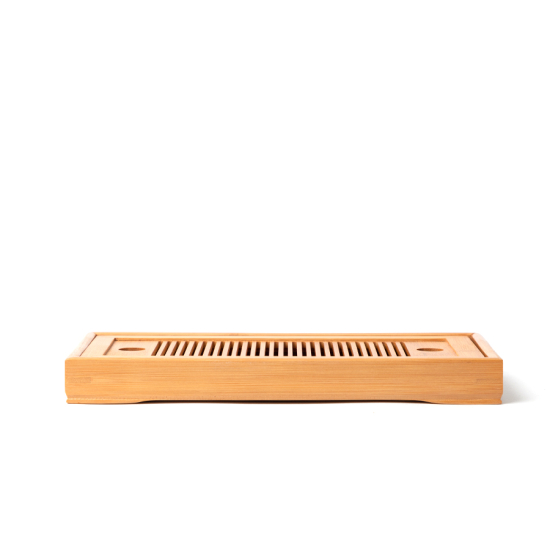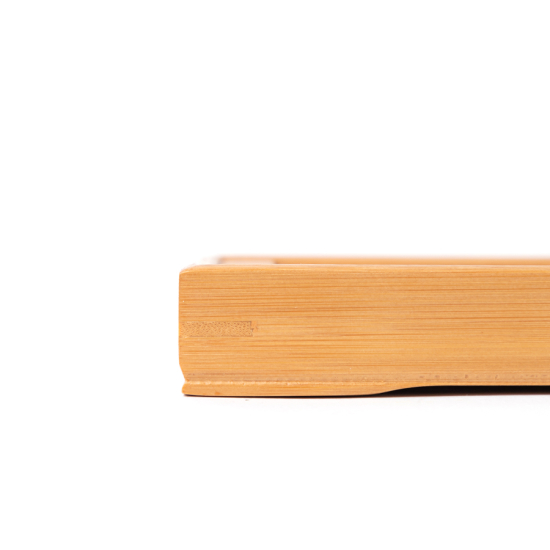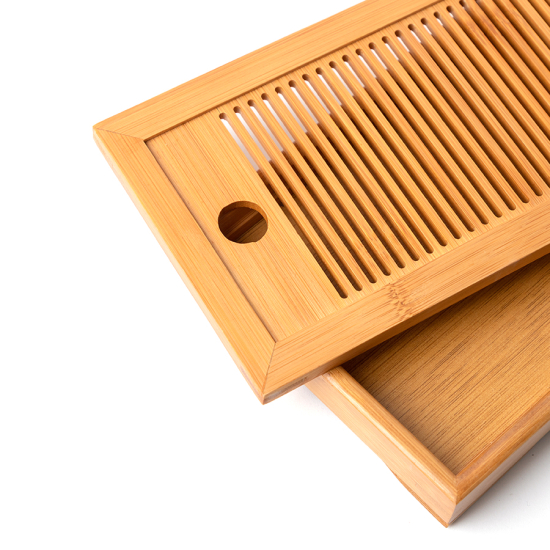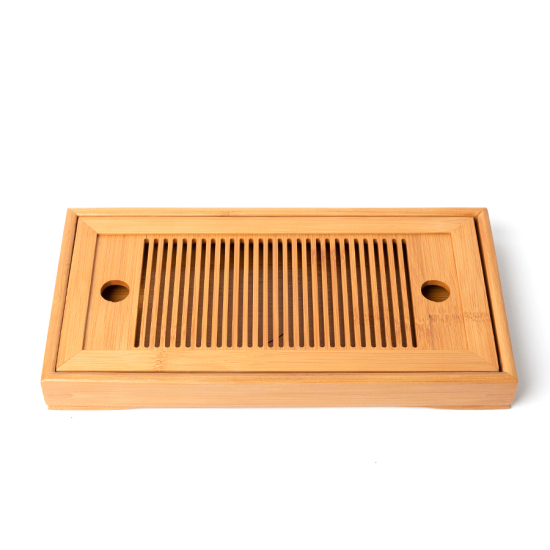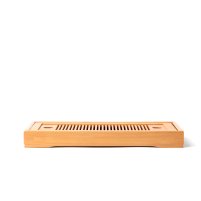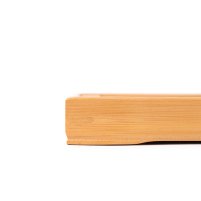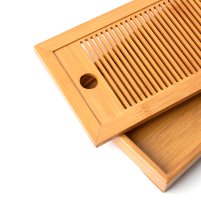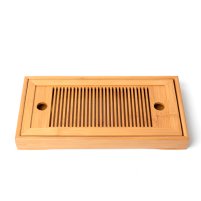Gong Fu Cha Tea Ceremony 工夫茶
The Chinese Gong Fu Cha tea ceremony is a ritual of preparing tea in the best possible manner. This philosophy is reflected in the term "gong fu cha" itself, literally "making tea with skill". Important during this special form of tea preparation is keeping the temperature loss between boiling the water and actually drinking the tea as low as possible. To achieve this, the teapot and drinking bowls are repeatedly reheated with hot water during the course of the ceremony.
To collect the excess water used in the ceremony, tea boats were created. A tea boat is a grooved tray and base in which water can collect. In a more original version of this tea ceremony, a deep saucer and jian shui 茶船 are used instead of a tea boat. The saucer catches the water, which is then emptied into the larger jian shui.
A small Chinese teapot, ideally made of Yixing clay, or a gaiwan is recommended for preparing the tea. If tea is being prepared for several guests, it is also a good idea to use a cha hai. Although also suitable for holding a tea ceremony for one, choosing a larger tea bowl of 150ml or more is ideal. When using only one tea bowl, it is important to ensure that it can hold the entire contents of the teapot. Only then is it possible to enjoy multiple infusions without distortion from the one that came before.
Step 1: Preparation
The tea boat is placed on a stable surface such as a table top. The teapot (or gaiwan) and the drinking vessel (or cha hai) are now placed on the surface of the tea boat. If a saucer is used instead of a tea boat, the teapot alone is placed atop it.
Step 2: Ceremonial Cleaning & Pre-Washing
Pour boiling water over the outside of the teapot and the lid. Next, fill the teapot and drinking bowl halfway with hot water. Then, empty both into the tea boat or the separate jian shui. In this way, the instruments are demonstratively cleaned and preheated for the first infusion.
Step 3: Awakening the Tea
Now the tea is added to the teapot. For a Gong Fu Cha tea ceremony, plenty of tea is used (⅓ to half the capacity), brewed briefly but very frequently. In the case of teas with compressed leaves (tightly rolled oolongs or tightly pressed Pu-Erhs, for example) it is recommended to wet them once very briefly with hot water and to pour the water off again immediately after a few seconds. This procedure helps to loosen the tea leaves and to obtain a full and aromatic first infusion. Waking up the tea in this way can also be done for less compact Chinese teas, but it is more for ceremony rather than to improve the flavour. The excess water from this step is then poured into tea boats or jian shui.
Step 4: Preparing the Tea
The teapot is first doused with hot water on the outside, then filled with hot water and the tea. Next, the tea bowl or cha hai is filled with hot water and immediately poured out again into the tea boat or jian shui. Now the tea is poured into the drinking bowl or cha hai and can be enjoyed. The same procedure is followed for subsequent infusions. The infusion time is extended in the course of the ceremony until the tea slowly begins to lose its flavour. Good oolongs and Pu-Erhs can be brewed up to 10 times, and some aged teas can accomodate even more.



